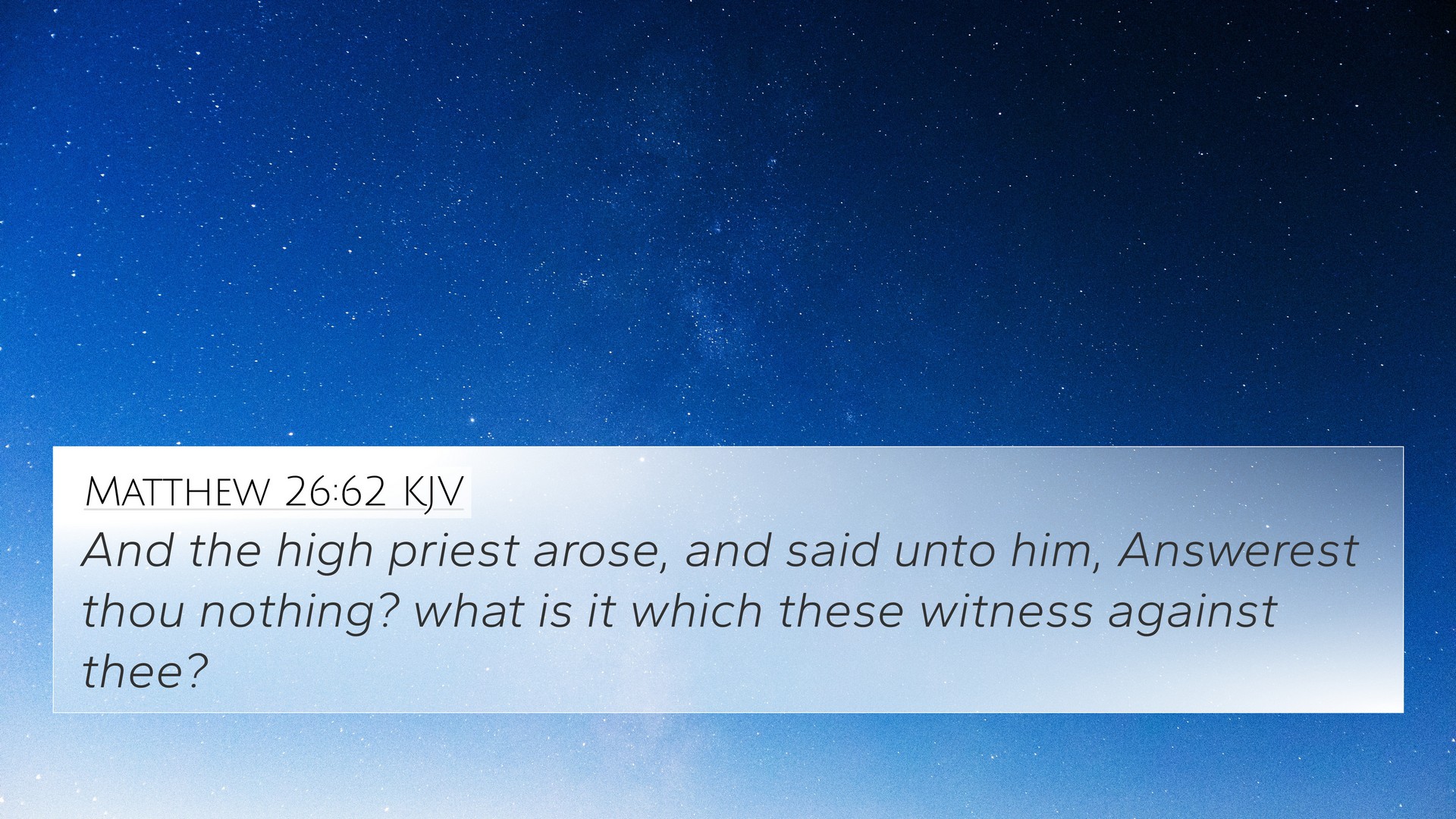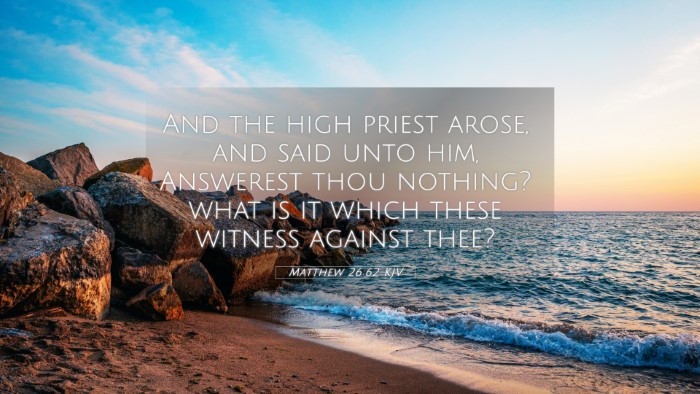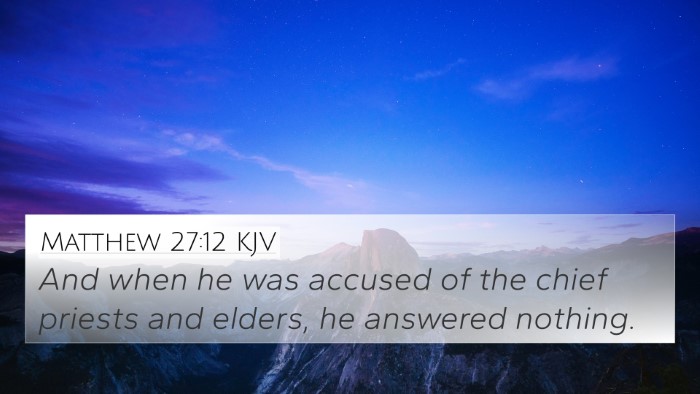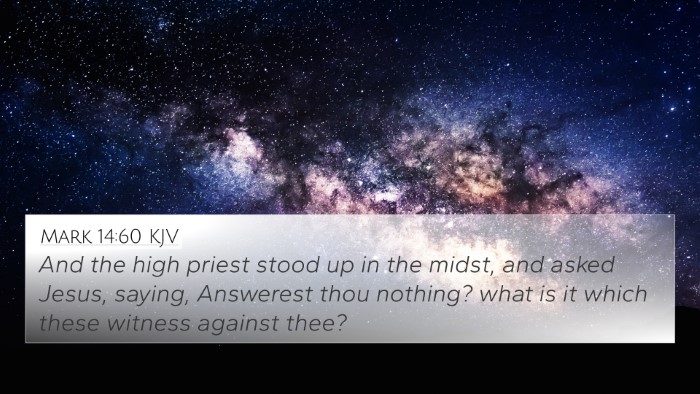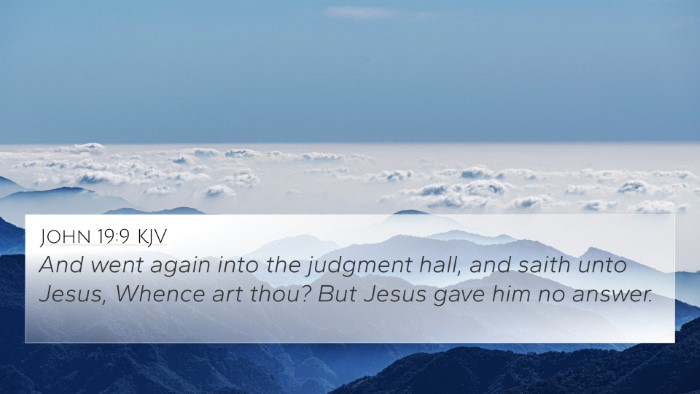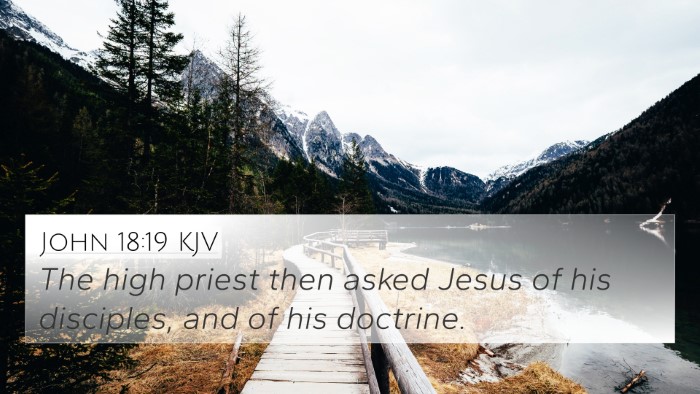Understanding Matthew 26:62
In Matthew 26:62, the high priest Caiaphas addresses Jesus during His trial, where he demands an answer regarding the allegations against Him. This verse serves as a crucial moment within the narrative of Jesus’ passion, emphasizing the tension between earthly authorities and divine truth. Various public domain commentaries provide insights into the deeper meanings embedded in this passage.
Context of the Verse
This verse occurs in a broader narrative where Jesus stands accused before the Sanhedrin. The high priest, symbolizing religious authority, seeks to elicit a response from Jesus that could justify a verdict of blasphemy. Understanding the significance of this moment requires examining both its theological implications and its place within the storyline of the Gospels.
Commentary Insights
-
Matthew Henry:
Henry highlights that the question posed by Caiaphas reflects the blindness of the Jewish leaders to the truth of Jesus’ identity. He points out that their demand for an answer is rooted in a desperate desire to find grounds for accusation, revealing their hardness of heart.
-
Albert Barnes:
Barnes notes the irony in Caiaphas’s inquiry. He emphasizes that Jesus, being the Messiah, was not obliged to defend Himself against false accusations. This portrayal illustrates the fulfillment of prophecies regarding the suffering servant, who like a lamb before its shearers, was silent.
-
Adam Clarke:
Clarke provides a detailed examination of the legal implications of Caiaphas's role in this trial, noting the irregularities that took place. He asserts that the high priest’s actions constituted a breach of justice aimed at silencing the truth of Christ.
Thematic Connections
This verse can be linked thematically to several other Biblical passages that deal with themes of authority, truth, and the nature of false accusations. Key thematic connections include:
- John 14:6: Jesus declares Himself as the way, the truth, and the life.
- Isaiah 53:7: Prophecy of the suffering servant who does not open His mouth against His accusers.
- 1 Peter 2:23: Jesus, while being reviled, did not revile in return.
- Matthew 5:11: Blessed are the persecuted for righteousness' sake.
- Luke 23:2: Accusations made against Jesus regarding His claims.
- Psalm 38:13-15: A cry of the innocent before their accusers.
- Matthew 26:63: The continuation of Caiaphas's question emphasizes the expected silence of Jesus.
Cross-Referencing Biblical Texts
Cross-referencing this verse not only deepens our understanding of the trial of Jesus but also underlines significant thematic links throughout the scriptures. Here are some specific points of reference:
- Exodus 20:16: Commandment against bearing false witness.
- Matthew 12:14: The plotting of the Pharisees against Jesus illustrates ongoing hostility.
- Luke 22:66-71: A broader context of the council's trials against Jesus.
- Acts 6:13-14: A parallel to false accusations against Stephen highlighting recurring themes.
- Matthew 27:12-14: Jesus' further silence before His accusers solidifies the motif of unjust suffering.
Conclusion
The examination of Matthew 26:62, in conjunction with insights from respected biblical commentaries, reveals the depth of meaning embedded within this singular moment of Jesus' trial. Understanding not only the immediate context but also the broader biblical narrative enhances our comprehension of the connections between various scriptures. This verse serves as a poignant reminder of the often hostile environment surrounding the truth, as well as the prophetic nature of Christ’s suffering.
